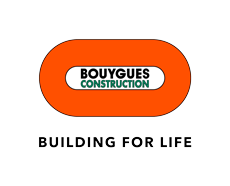Bouygues Construction wins contract for first positive-energy building
Bouygues Construction subsidiary Norpac, operating in northern France, has won a contract for construction of one of the first positive-energy buildings in France: an archives building for the Nord administrative district. To be carried out under a design-and-build contract for a total sum of 30 million euros, the project is for the Conseil Général du Nord and is located in Lille.
The building was designed by architects Pierre Gilbert (Zigzag Architecture) and Jérôme de Alzua. In addition to archives rooms, its total floor space of more than 13,000 sq. metres will include extensive work areas.
A positive-energy building is one that produces more energy than it consumes. The expertise of Norpac and its partners (Betom, Sodeg and Cap Terre) has been applied to a number of aspects to keep future energy consumption down: enhanced insulation of the building enclosure (walls, roof, glazing), superior air and watertightness, and the choice of innovative, energy-efficient equipment and technologies. Since the overall priority is to store archives under optimum temperature and humidity conditions, a special innovative, high-performance air-conditioning system (desiccant-based) has been chosen. The insulation and other systems employed achieve a record low level of primary energy (1) consumption, at 12.9 kWh/sq. metre/year compared to the average consumption of 105 kWh/sq. metre/year for a conventional building of the same type. Heat and electricity will be produced by a combined heat and power plant (2) running on plant oil and by 350 sq. metres of solar cells (3).
The seven-storey building will be clad with a material that has the appearance of papyrus. Its bright stainless-steel design means it will be self-cleaning through the action of rainwater runoff. An ecoroof will protect the building from outdoor weather conditions and enhance its durability. All the construction materials have been selected for their superior performance in terms of temperature and humidity as well as their durability: concrete post-and-beam framing (to keep the structure light and minimise foundation works), Monomur blocks (insulating wall infill), and concrete hollow-core slabs for floors (in order to extend floor spans and thereby reduce the number of supporting columns).
The project is currently at the design phase. Construction will start in the first half of 2009 and will take two-and-a-half years (handover in October 2011).
Early in 2008, as part of its sustainable development policy, Bouygues Construction set up a sustainable construction task force. Comprising renowned experts in the Group’s various business areas, the task force proposes concrete solutions for tackling sustainable development issues: identifying the most innovative, effective solutions, overseeing certain R&D projects, selecting software, partners, etc. Bouygues Construction’s orders currently include more than 100 projects for buildings with a high level of environmental performance.
(1) Primary energy: energy derived directly from the planet's resources. As opposed to the final energy delivered to the building.
(2) CHP plant: a combined heat and power facility simultaneously produces electricity and heat from a single plant, using a single fuel. The plant recovers the heat produced by combustion whereas with conventional power plants this heat is lost.
(3) Solar cell: a solar cell recovers some of the energy of solar radiation and converts it into electricity. It is not the same as a solar panel which converts light into heat (which is harnessed in the form of hot water).
